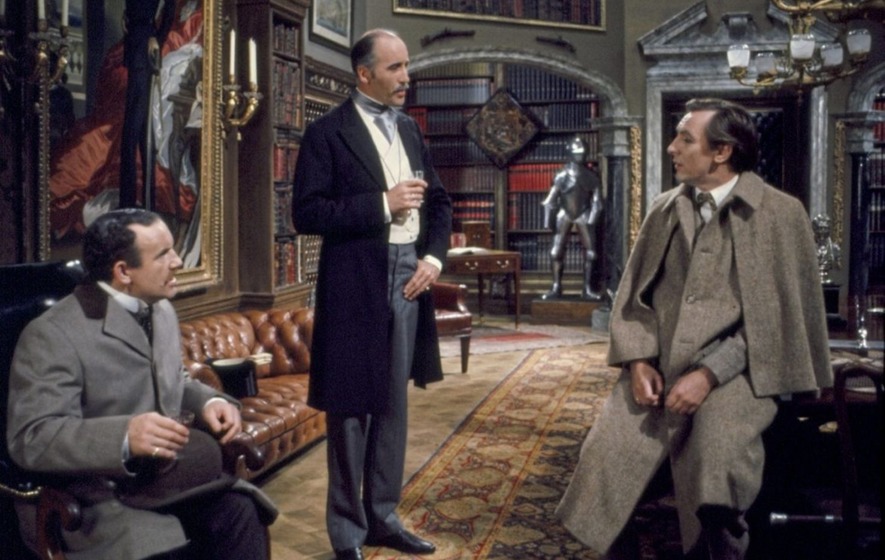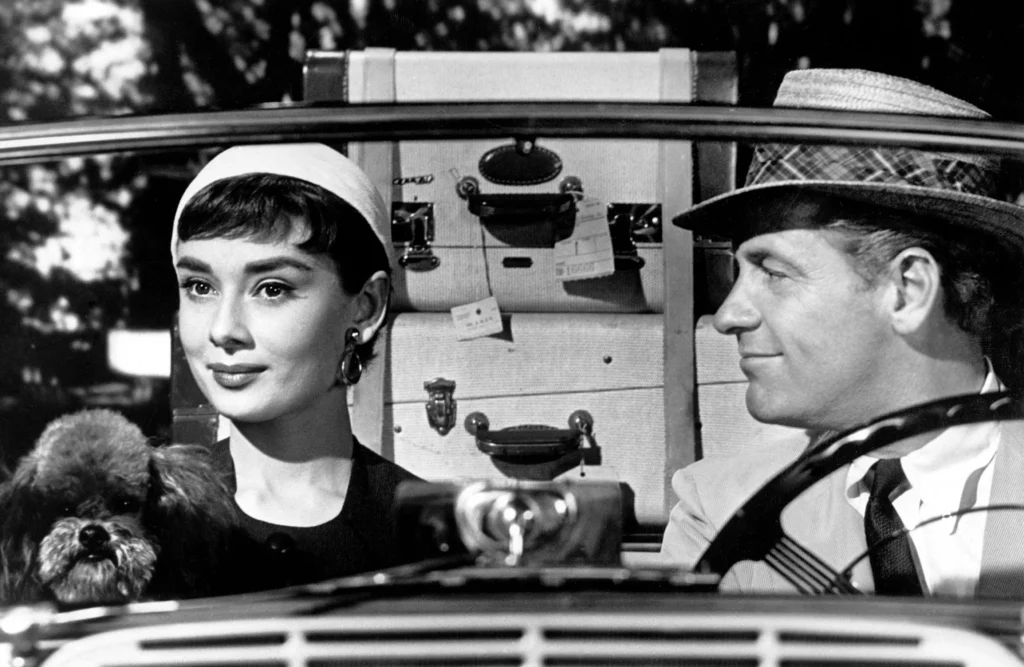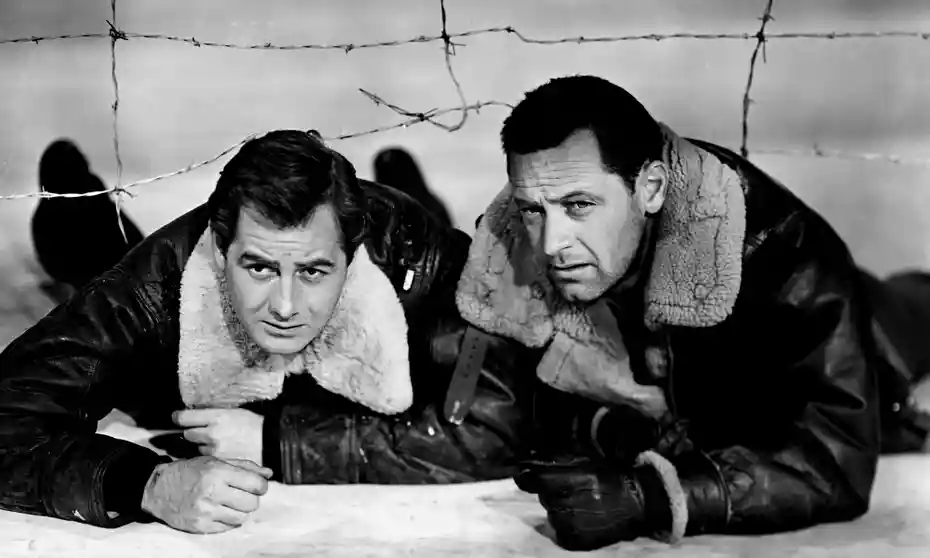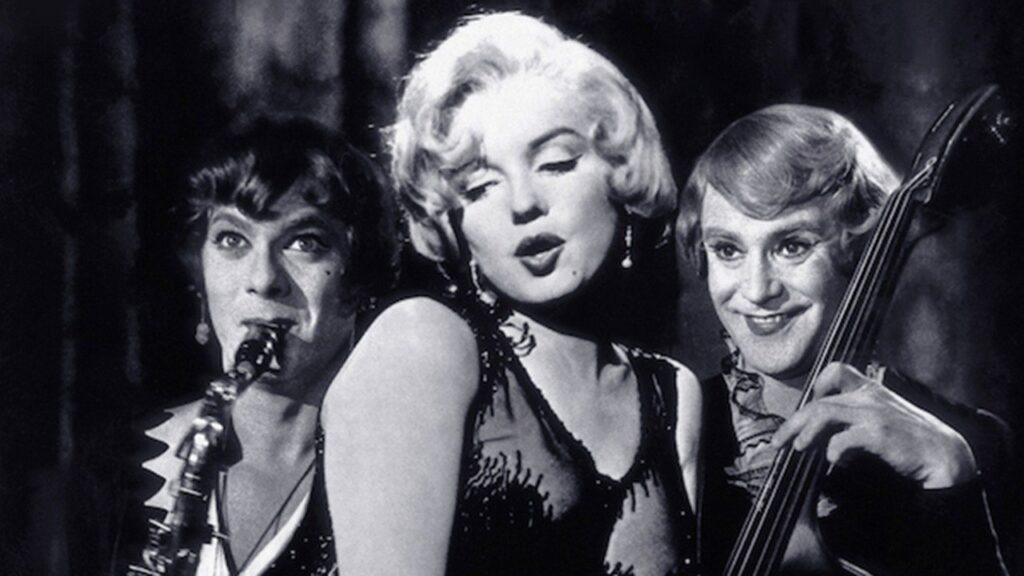Billy Wilder was a director with an extensive color palette. Ask a number of Old Hollywood enthusiasts what his defining trait as a filmmaker is and you will get a myriad of answers. Is it his knack for farce? Is it his biting cynicism? Perhaps it is his clever, rat-a-tat dialogue? You can’t go wrong with any of those answers or a number of others. The Polish-born Wilder’s Hollywood directorial career spanned nearly fifty years and saw him become one of the most celebrated and lauded filmmakers of his era. He is one of only a handful of filmmakers to have directed multiple Best Picture winners and he piled up a total of seven Oscars over the course of his career, which is probably selling him short when you look back at his competition. His career had its bumps, to be sure, but there are far more gargantuan hits than misses and the upper echelon of his filmography can stand toe-to-toe with just about any competition. WIthout further ado, here are the films of Billy Wilder, from worst to best:
- The Emperor Waltz
In Billy Wilder’s own words, “I have no talent for a musical, because I can’t get it into my head that people break into a song for no reason, whatsoever.” That is incredibly apparent in The Emperor Waltz, which is a musical that seems to resent that it has to be a musical. It is not completely devoid of cleverness, but Bing Crosby overwhelms the entire film with his apparent need to make it “A Bing Crosby Picture”, first and foremost. Crosby plays a traveling gramophone salesman in Vienna and the story is about as interesting as that high-level synopsis implies. The Emperor Waltz is nothing more than a curio in Wilder’s filmography; notable for its attempt at something different, but the least successful film that the great filmmaker ever put together. 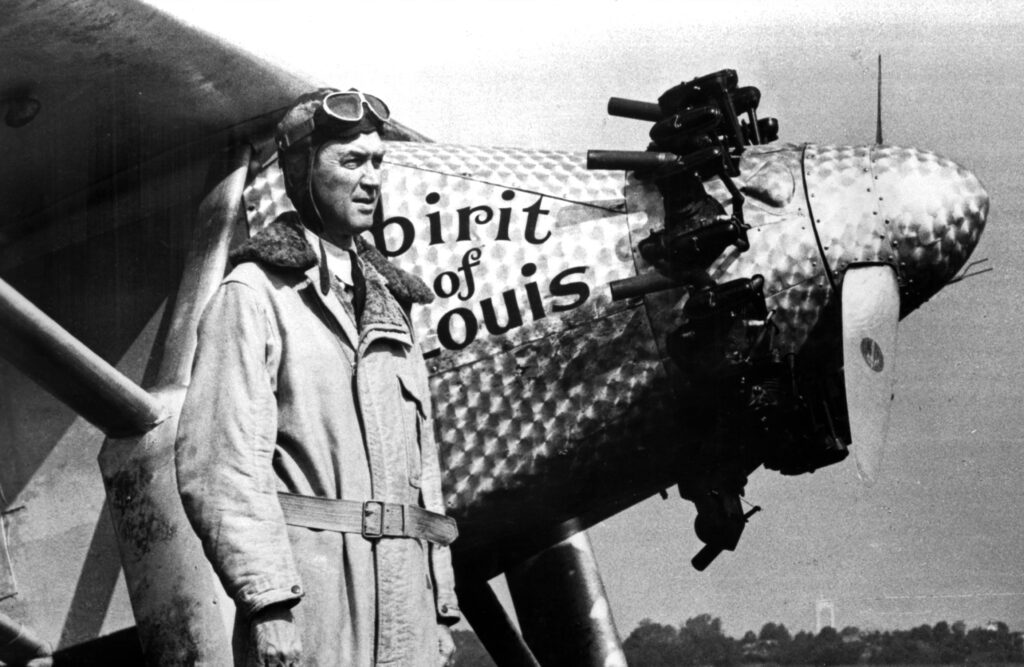
- The Spirit of St. Louis
At a glacial two-hours-and-fifteen minutes, The Spirit of St. Louis is one of Wilder’s longest films. The retelling of Charles Lindbergh’s history-making flight across the Atlantic Ocean does not seem, on the surface, to be tailor-made for Wilder’s sensibilities, but Wilder was a personal friend of Lindbergh. As it turns out, Wilder was not, in fact, the correct filmmaker for the material. The film indulges in the grueling process of preparing for the flight in an attempt to emphasize Lindbergh overcoming the odds, but the tension never sticks. Not even Jimmy Stewart has enough charisma to keep the film from becoming a downright slog.
- Love In the Afternoon
Perhaps a sweeping romance starring Audrey Hepburn and a 15-years-younger Gary Cooper could have been one for the ages, but the 27-year-old Hepburn and 55-year-old Cooper have the chemistry of a pair of 2×4’s set five feet apart. Cooper sulks and mutters through the entire endeavor in one of the least convincing romantic lead performances from a star of his caliber in the Classic Hollywood era. It is a real shame, because the lavish production and Hepburn’s magnetic performance deserved so much better. By 1957, Wilder had become one of the most effective creators of black-and-white images in Hollywood and Love In the Afternoon is full of striking, romantic compositions. If only it was in service of a film that created any sort of spark…
- The Major and the Minor
Wilder’s first American production (he co-directed a French film almost a decade earlier), The Major and the Minor is a relatively entertaining film that simply does not sit right in 2021. In the film, Ginger Rogers’ Susan pretends to be a 12-year-old girl in order to get a discounted train ticket to return home after a disappointing attempt at life in the big city. It is a delightful romp for most of the film. Then, it turns into a love story between Susan and Army Major Phillip Kirby (Ray Milland). The implication is that Kirby must repress feelings of attraction he has for a 12-year-old girl. The film then wants the audience to swoon when she reveals she is an adult and the two kiss at a train station. Rogers and Milland are absolutely fantastic in the film, but not even they can talk me into getting behind a relationship built on the back of that particular lie.
- Fedora
It is always difficult to see a past-their-prime artist attempt to replicate one of their masterpieces. With Fedora, Wilder wanted to create the same lighting in a bottle magic he did with Sunset Boulevard. Fedora’s first two acts are structured almost identically to those of Sunset and even sees the return of William Holden, one of the main players in that earlier film, to Wilder’s oeuvre. When the film’s final act diverges a bit from his previous work, it devolves into an exposition dump. Wilder’s previously colorful, beautiful narration becomes derivative and dull. It is one of the rare instances of plot overtaking character in a Wilder film. Additionally, Wilder never seemed to fully conquer the challenge of color cinematography. Fedora is all browns and beiges, a drab affair from one of the masters of black-and-white. Fedora is, perhaps, the saddest Wilder film to watch, as the retread makes it feel like the sun has set on his reign as a revolutionary.
- The Private Life of Sherlock Holmes
Wilder’s comedic take on the world’s greatest detective tackles Sherlock’s drug use and sexuality to mixed results. The film’s lasting legacy is coding Holmes as queer, an interesting idea that never pays off. The film is overlong and becomes a very generic Sherlock story in the latter half, but the first half is undeniably engaging. It is intimate and patient in its character development, portraying one of pop culture’s most storied characters as he has never been portrayed before. When it becomes just another mystery, not even Christopher Lee as Mycroft Holmes can keep it afloat. A valiant effort, but one that ultimately can’t completely crack the case.
- Buddy Buddy
Released in 1981, Buddy Buddy was Billy Wilder’s final film and his third time working with The Odd Couple, Walter Matthau and Jack Lemmon. This is the least successful film the trio put together, but it is not without its moments. Matthau’s typically grumpy, foul-mouthed assassin is the driving force behind the situational comedy and Klaus Kinski gives a wonderfully demented performance (shocking, I know) as a sex guru who has wooed Jack Lemmon’s estranged wife. It takes far too long for Matthau and Lemmon to team up, but there are a handful of witty scenes in the middle of the convoluted plot. It is mostly a half-baked plot used as a bridge to get from one set of hijinks to another. For many, that will be enough.
- Irma la Douce
Wilder was a director capable of making films that feel incredibly contemporary, despite being decades old. He was also capable of films that feel beyond antiquated in the year 2021. Irma la Douce is one of the latter. An incredible Shirley MacLaine performance is not enough to overcome the occasionally gross ideas the film posits on relationships and gender politics. MacLaine plays the titular Irma, a popular call girl who Jack Lemmon’s Nestor Patou quickly falls in love with. Unfortunately, Irma is given little to no agency. Lemmon is at his zaniest, to a fault, getting to play multiple characters, indulge in pratfalls galore, and generally act like a goof. On the positive side, Irma la Douce is, perhaps, Wilder’s best-looking color film, featuring a wonderful Parisian set with bright colors and patrons clothed in beautiful garments. There is a great movie tucked away somewhere in Irma la Douce, but it is not revealed in the end product.
- Sabrina
What an odd beast Sabrina is, considered by many to be a stone cold classic. Cinematographer Charles Lang is at his absolute best, establishing a sense of elegance and discovery with a wonderful blend of wide shots and close-ups, helping to frame Audrey Hepburn like the movie star she was meant to be. This was not Hepburn’s “A Star Is Born” moment, but it was a crucial step in the evolution of her persona. She is incredibly winning as the vivacious Sabrina and WIlliam Holden is equally wonderful as the second corner of the film’s love triangle, David Larrabee. However, the film’s Achilles’ heel is legendary actor Humphrey Bogart, who plays David’s brother, Linus. The same flaws that plague Love In the Afternoon turn Sabrina from a great film to one that is merely average. Sabrina and Linus never make sense together. Bogart is so low-energy and uninteresting. It is unfathomable that an audience would get to the end of the film, see Hepburn and Bogart (who was 30 years her senior) embrace, and leave the theater yearning for a love story like the one they went through in Sabrina.
- The Front Page
The Front Page features some of the best dialogue I.A.L. Diamond and Billy Wilder created as a team in their storied partnership. The film’s zaniness is very much its strength, while its plot is its great weakness. Jack Lemmon’s exasperated Hildebrand Johnson (Wilder always had a knack for great names) and Walter Matthau’s Walter Burns do their typical oil and vinegar schtick to solid effect. Based on Charles MacArthur’s play, the story revolves around a series of heightened attempts to catch a death row inmate who escaped prison. Wilder unleashes some pretty wild political swings and some more questionable sexual politics in the film. In the end, the film is a seesaw of terrific scenes and dull ones, ultimately becoming a satisfying, clever film with gaping holes in its center.
- The Lost Weekend
Wilder’s first best picture winner is admirable in its ambition and probably hit very hard in 1945, but its depiction of addiction has aged like a fine milk. In short, the film posits that addiction can be overcome by the power of love. As powerful as the depictions of Don Birnam’s addiction can be, the finale undercuts all of the good that came before. Ray Milland gives a heartbreaking performance and Wilder flexes his technical muscles in many scenes of drinking that feel like they were stripped from a horror film. Addiction is a demon whose shadow shrouds every scene of the film and it operates as an effective tale of sadness and a sense of worthlessness for the large majority of the run time, but that ending… it’s just fundamentally destructive to what came before it. It was a different era and this was a film that was revolutionary at the time, but The Lost Weekend is one of Wilder’s most dated films, albeit one with great intentions and real craft.
- The Fortune Cookie
The final Lemmon/Matthau joint on this list, The Fortune Cookie is a largely cynical film that really understands the power of the dynamic between its two leads. The film opens with a very fun scene in which Lemmon’s character, a photographer, is run over by a member of the Cleveland Browns. His injuries are fairly mild in nature, but Matthau’s slip and fall lawyer bursts into the film like the devil on Lemmon’s shoulder, telling him to milk his injury for all its worth. The film largely takes place in a hospital room, but the snappy dialogue provides a great deal of humor and snark. The real standout of the film, though, is Ron Rich as Luther ‘Boom Boom’ Jackson, the running back who injured Lemmon’s character. His sincerity and empathy pulses throughout the entire film and the ending of the film is downright heartwarming, largely because of his character arc. Boom Boom Jackson is the best of us.
- Five Graves to Cairo
Five Graves to Cairo is one of those hidden gems that make a deep-dive into a director’s filmography worth it. It is one of Bill Wilder’s lesser-known films, but the action-adventure film is a downright blast. Comparisons to the Indiana Jones franchise are unavoidable, despite its smaller scale and direct grappling with the events of World War II. Released in 1943, the film is one of the better propaganda pictures of its time. At the end of the day, it is an inherently pro-American movie, but it certainly asks questions about the underlying morality of America’s goals in the war. Billy Wilder certainly could have had a career as a director of classical adventure movies, but his swerve into the lane of comedy and prestige makes Five Graves to Cairo a fun pit stop in his wonderful career.
- Stalag 17
What propelled Billy Wilder to make a comedy about World War II POWs? That is a very valid question. How did Billy Wilder make a comedy about World War II POWs? That is an equally valid, even more difficult to answer question. Stalag 17 is, first and foremost, a star vehicle for WIlliam Holden, one of Wilder’s greatest collaborators. His hijinks stem from the tedium of life in the camp. His character has become a downright misanthrope in the face of men’s worst impulses and that misanthropy drives both the comedy and drama in the film. One has to wonder what kind of impression this film had on Robert Altman, whose breakout film, M*A*S*H, shares much of Stalag 17’s DNA. Stalag 17 is not the game changer that Altman’s film was, but it is always entertaining and never lets the horrors of war completely disappear from the story.
- A Foreign Affair
A biting social commentary disguised as a quirky romance, A Foreign Affair is the beginning of Wilder’s best traits. Even when the film is subversive and dark, the dialogue and editing add levity and a level of absurdity. In the film, a U.S. Army captain is caught in a love triangle with an ex-Nazi and an American congresswoman. The film’s moral quandaries create a sort of highwire act of choosing sides. The film’s plot twists and turns with an added sense of artfulness provided by cleverly repeated visual motifs and a sense of true sensuality. This is not the sort of propaganda you would have seen made just a few years earlier. Released in 1948, after the war ended but its memory still firmly at the front of the American mindset, there are no clear-cut “good” and “bad” characters. A Foreign Affair is a wonderful intersection of Wilder’s sharp wit and his biting cynicism.
- Kiss Me, Stupid
This forgotten gem was one of Dean Martin’s handful of bites at the apple of movie stardom and, perhaps, the film that best utilizes his persona with wonderful meta-commentary. The hijinks of late Wilder are all there, but this film has a sexually explicit center that surely ruffled feathers in the 60s. The sexual repression teeming from co-star Ray Walston’s performance makes for fertile comedic soil and Dean Martin as “Dino” (so, yeah, some version of himself) is wonderfully self-aware. He is as pathetic, in private, as he is charming, in public.
The film grapples with sexuality in ways that some modern films would even be afraid to. Kim Novak gives a layered performance as a call girl yearning for… well, she isn’t quite sure, but that makes her so relatable and so funny. It is a great, atypical performance from Novak as the disruptive force of sexuality. Everybody sleeps with everybody else, but it isn’t treated like the Salem Witch Trials. Some of the film’s ideals are antiquated (to be kind) but it remains a challenging, provocative piece of work.
7. The Seven Year Itch
It feels like The Seven Year Itch has been increasingly dismissed over time by discerning film fans for its treatment of Marilyn Monroe’s character (simply credited as “The Girl”). The Girl is a bit dense, a bit submissive, and very much some kind of male fantasy. However, that male power fantasy is the point. It is pretty clear that this movie wants to be more lurid than it is, but the chaste depictions of infidelity only make the power fantasy even more palpable. It allows Tom Ewell’s Richard to maintain a sense of moral superiority throughout. What a big, strong man he is, rejecting the nameless Girl’s advances. With a more biting ending, this could have been absolutely fantastic. As it stands, this was tremendously entertaining and wonderfully tongue-in-cheek. Marilyn Monroe gives a pitch perfect performance in the film. She was a truly special performer with the right material.
- Avanti!
Avanti! is a film of contradictions. It is one of Wilder’s meanest films but also one of his funniest. Jack Lemmon has never been more agitated but he is also incredibly charming. Wilder embraces the sensibilities of New Hollywood with Old Hollywood aesthetic panache. The film, released in 1972, feels like Wilder’s meta-acknowledgement of the dawn of a new era of filmmaking. The story revolves around the death of Jack Lemmon’s character’s father who, unbeknownst to Lemmon, had a longstanding affair with a young woman. The mistress is played wonderfully by Juliet Mills who, despite occasionally being treated cruelly in the film, presents one of most intriguing, well-rounded female leads in the Wilder canon.
Avanti! is also a visual feast, taking full advantage of the film’s Italian setting. Wilder was not always the best stylist when it came to the use of color photography (which might be why he stuck with black-and-white after color had become the standard) but this is his most effective use of the newer medium.
- Witness for the Prosecution
Witness for the Prosecution is a testament to the power of a great ending. The rest of the film, a legal drama with a healthy dose of interpersonal melodrama, is good but falls short of great. However, the film’s final fifteen minutes, anchored by Merlene Dietrich and Charles Laughton, are downright devastating. It is one of the prime examples of a slow burn leading to a powder keg finale. The film is yet another of Wilder’s backdoor reflections on the Holocaust and World War II, as it is peppered with allusions to World War II and the Soviet occupation zone of Germany. As a reflection on that period, it is appropriately bleak and dour. It is Wilder’s most claustrophobic film, featuring some wonderful flourishes of design and use of shadow. Come for the Agatha Christie turns, but make sure you stay for the film’s very grand finale.
- Some Like It Hot
Most would consider Some Like It Hot Billy Wilder’s definitive work of farce and it is easy to see why. It is just so much fun. It may not have the bite of something like The Apartment but Wilder and I.A.L. Diamond wove a near-perfect tapestry of pure entertainment. The hijinks and humor never relent. You can feel the actors trying to one-up each other in every scene. The film is zany, sharp, and, unlike many of Wilder’s films, fascinatingly modern. The few stumbles that the film does fall prey to occur in its more plot-heavy stages, concluding in a mildly unsatisfying way, but the characters are too good to let that spoil the endeavor, as a whole. There is an odd sweetness to Some Like It Hot, making it a bit of an oddity in Wilder’s filmography full of liars and schemers. Much of that sweetness comes from the performance of Marilyn Monroe, which conveys a sense of world weariness and a desire for something more. It makes you forget about the plot problems and occasional dive into slightly more generic elements. After all, nobody’s perfect…
- Double Indemnity
Film noir was firmly entrenched as one of the go-to studio genres by 1944, but Billy Wilder gave it a shot in the arm with Double Indemnity. The film is sleeker, sexier, and more violent than just about all of its counterparts of the time. Wilder has said that he considers this his greatest film, and while I disagree, it is a hard argument to combat. It feels like a bit of a Rosetta Stone for film noir, a film that you can watch and attain a broad understanding of what film noir feels like and means with just one watch. Raymond Chandler, who co-wrote the screenplay, has a knack for hard-nosed crime thrillers and his sensibilities meshed perfectly with the witty cynicism of Wilder. Rather than taking a “whodunnit” approach, the film’s opening sequence gets the “who” out the way in favor of a “how and why” narrative. Even with the content restrictions of the Production Code of the time preventing Wilder from adapting the dark ending of the source material, the film manages to be one of Wilder’s bleakest and saddest films. Of course, it always helps when you have performers with the natural gravitas of Fred MacMurray, Barbara Stanwyck, and Edward G. Robinson.
- One, Two, Three
This is far from Wilder’s most anonymous film, but it is the closest thing to a diamond in the rough that he has ever made. One, Two, Three is an absolute spitfire of a movie, oozing with wit and possessing a violent bite in the age of the Cold War. Billy Wilder and I.A.L. Diamond dive headfirst into madcap zaniness with this film and James Cagney has never been better. Commentating on the Cold War through the through of capitalistic red tape gives the film a long runway to fire off a barrage of gags and bits playing up the ridiculousness of the entire situation. Some might call putting One, Two, Three above Some Like It Hot on Wilder’s screwball hierarchy sacreligious, but its social lens sets it apart. Every time Cagney’s C.R. MacNamara clears one comedic hurdle, he is presented with one even taller, and lets you know how frustrated he is with mile-a-minute dialogue and pratfalls caused by an intense sense of frustration. It is a performance that very few are capable of pulling off and without it the film would completely fall apart. One, Two, Three is a comedic bullet train full of colorful characters, great physical comedy, and enough sociopolitical curiosity to keep any viewer on the edge of their seat.
- The Apartment
The Apartment has the sharpest and most subversive comedic wit of any Billy Wilder film but its greatest asset is the sadness brought to screen by both Jack Lemmon and Shirley MacLaine. Through this hilarious, sexy romp, Wilder comments on corporatism and the dehumanization of climbing the ladder. The premise of the film often inspires squirming and the idiocy of the adulterers using Lemmon’s character’s apartment is a deep comedic well. It all culminates with a recognition of the machine’s cogs, by which he is being manipulated, with a cathartic finale of this very sad story.
The film, the second Wilder film to win the Academy Award for Best Picture, also features elaborate production design (the endless of sea of desks that that occupy the office of an insurance company that feels at once crowded and lonely remains one of the indelible images in American cinema) and a wonderful score composed by Adolph Deutsch. Leave it to Billy Wilder to come up with a film based on the guy who lets Celia Johnson and Trevor Howard hook up in his apartment and leave it to Billy Wilder to somehow take that concept and weave one of the premier Best Picture winners in history.
- Ace In the Hole
This is one cynical piece of work. You could pluck Ace in the Hole out of 1951, release it in 2022, and it would still be culturally potent. In fact, we have seen pale imitators of Ace in the Hole (I’m looking at you, Nightcrawler). Kirk Douglas’ movie star allure is so key to the film’s effectiveness. His movie star persona is on full display and it keeps you on the hook, no matter how despicable his behavior becomes. However, he really stretches himself as an actor here, digging into his darkest tendencies and his willingness to go there in this film is admirable. There is never a moment where it feels like the film can have anything resembling a happy ending, as the bulk of the film’s tension is derived from one man’s attempt to deceive the mass media at the expense of a man trapped in a cave. This is Wilder’s meanest film and also his most thematically direct. The implications of the story being told are vast, as Wilder theorizes that people love stories and love unifying over tragic situations… as long as they can keep the “characters” of the situation at arm’s length. The rescue attempt – or lack thereof – becomes a literal carnival, an excuse for people to escape from the mundanity of their day-to-day lives. No one has a better idea of the distinctions between a screenwriter and a journalist than Billy Wilder, who began his career as the latter, and Ace in the Hole brilliantly blurs the line between the two and deals with the cultural aftershock of that confusion. The film’s finale is so dark, so daring, and features one of Wilder’s best final lines, which is saying a lot if you are a Wilder completist.
- Sunset Boulevard
It almost feels as though putting Sunset Boulevard at the top of a Wilder ranking is the only logical conclusion before you even start the exercise. For many, it has become a cornerstone of American cinema, exploring the messy corners of Hollywood sexism and exploitation. Gloria Swanson is dazzling as the film’s de facto Miss Havisham, a terribly wealthy and even more terribly lonely fading star. The film’s visual brilliance driven by its extravagant sets and wonderful black-and-white cinematography from John F. Seitz helps make it one of the definitive films of Classical Hollywood. Turning this story of Hollywood dreams into an ostensible film noir by presenting a murder in the film’s opening scene was a brilliant touch that adds a dread to every element of the film. The fog of pending doom shrouds the events on screen in wonderful ways. The dialogue in the film often burns through the characters like acid, as everyone is confronted with their own shortcomings. Especially potent is the narration, which is far more focused on the inner-workings of the mind than the film’s plot. Wilder is one of the greatest utilizers of narration and this is his greatest achievement with the tool that is so often misused by others. In an era in which toeing the line was the status quo, Wilder and co. pushed back on the dismissal of once-great Hollywood legends by showing the human beings being dismissed. For Hollywood executives, “talent” is little more than cattle to them, to be controlled and disposed of when their usefulness has expired. Nearly as good as Swanson are William Holden and Erich von Stroheim, who represent two sides of the controlling coin; they wish to push Norma Desmond on different tracks, but do not be fooled, they are both motivated by goals that benefit themselves as much as anyone else. It all culminates in a breathtaking, unimpeachable moment that will live in movie culture for the rest of time. It is a moment speaking directly to the audience, daring them to confront their relationship with the movies and the people involved with their creation. It is brilliant in a dozen different ways and it makes Sunset Boulevard Billy Wilder’s ultimate masterpiece.



